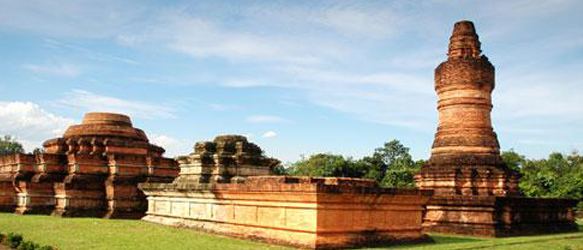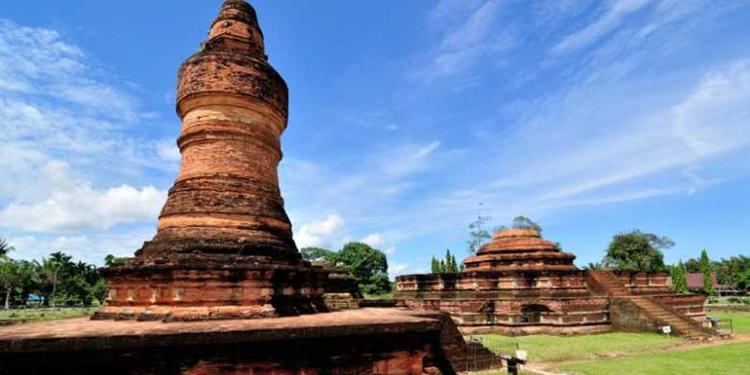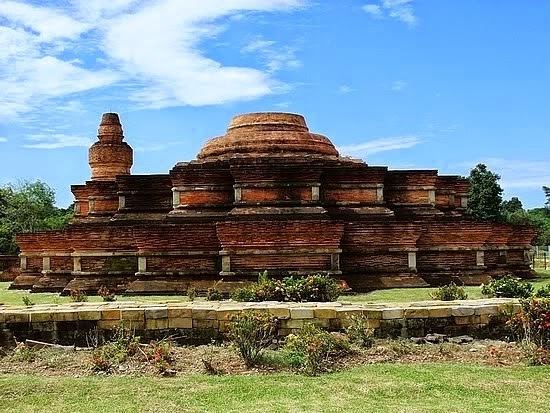 | ||
Similar Muaro Jambi Te, Mendut, Kalasan, Penataran, Sewu | ||
Film dokumenter candi muara takus peninggalan terbesar kerajaan sriwijaya dji phantom 3 standar
Muara Takus (Indonesian: Candi Muara Takus) is a Buddhist temple complex, thought to belong to the Srivijaya empire. It is situated in Kampar Regency in Riau province, Sumatra, Indonesia. Its surviving temples and other archaeological remains are thought to date to the eleventh and twelfth century AD. It is one of the largest and best-preserved ancient temple complexes in Sumatra.
Contents
- Film dokumenter candi muara takus peninggalan terbesar kerajaan sriwijaya dji phantom 3 standar
- Dua dunia eps selasa 8 april 2014 candi muara takus full
- History
- Design and decoration
- References
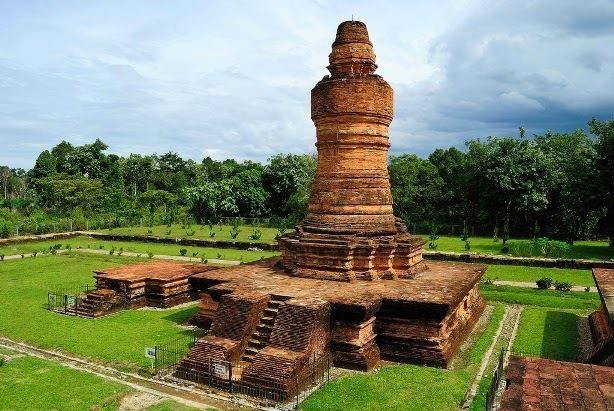
Dua dunia eps selasa 8 april 2014 candi muara takus full
History
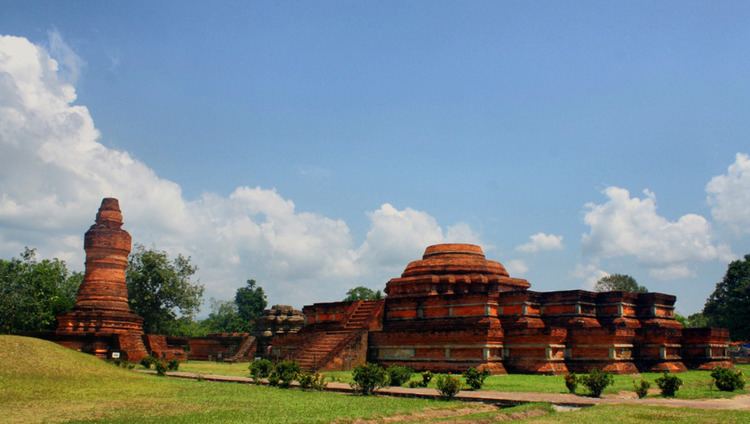
Candi Muara Takus was constructed by the maritime-based Sriwijaya Empire in the eleventh century. The architecture and design of the temples clearly indicates that they are of Mahayana Buddhist origin. It has been suggested by Schnitger that the major temples at Muara Takus may have undergone major renovations in the twelfth century. It is thought that the area was used as both a religious and trade centre by Sriwijaya. The site was abandoned for many centuries before it was re-discovered by Cornet De Groot in 1860. The site was explored and surveyed by W.P Groenveld in 1880 and excavations have been conducted periodically since. The site is now protected as a national monument.
Design and decoration
The temple complex of Candi Muara Takus is surrounded by a 1 metre tall stone perimeter wall that measures 74 x 74 metres. The outer wall is penetrated by a gateway on the northern side. Within the walls are the remains of four substantial Buddhist temples (candi). The most unusual of these is Candi Mahligai. This lotus-shaped Buddhist stupa is unique in Indonesia though there are numerous similar ancient structures in Thailand and Myanmar. This structure is founded on an octagonal base and reaches a height of 14.30 metres. The uppermost level of the stupa is decorated with lion figures that are barely discernible from below. On the east side of Candi Mahligai is the base of Candi Palangka. It is constructed from red stone and now only reaches a height of 1.45 metres. It was reportedly much taller at the time of the earliest colonial expeditions to the site but the upper terraces have long since collapsed. A third structure within the complex is Candi Bungsu. The most striking thing about this temple is that it was built from two very different kinds of stone. One part is built from red stone and the other section from sandstone. This temple now reaches a height of 6.20 metres. The largest structure at Candi Muara Takus is Candi Tua. Its base measures 32.80 metres x 21.80 metres and it reaches a height of 8.50 metres. This temple is terraced and it bears some resemblance in its design to the much larger stupa, Candi Borobodur, in Java. Like all the temples at Candi Muara Takus, Candi Tua features only minimal decoration. The most notable decorative feature are the seated lion figures on the upper terraces.
